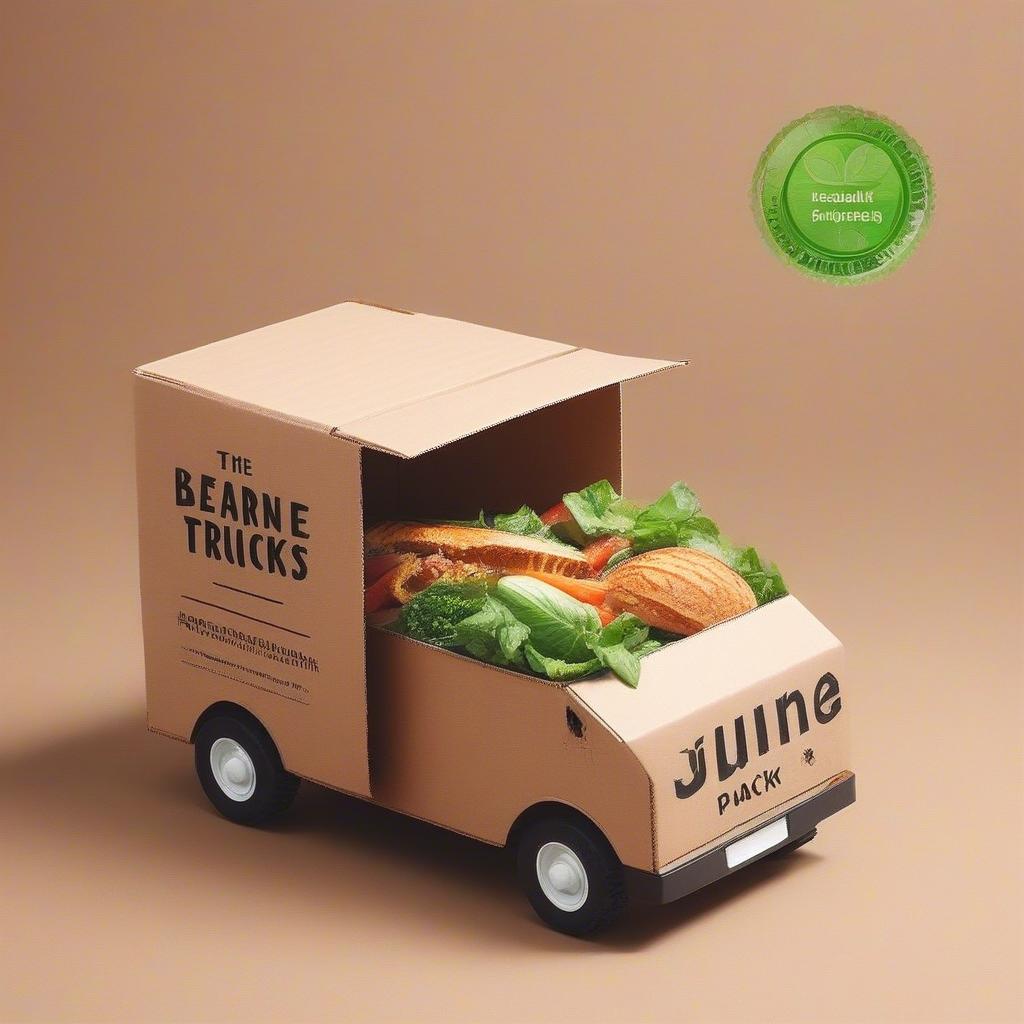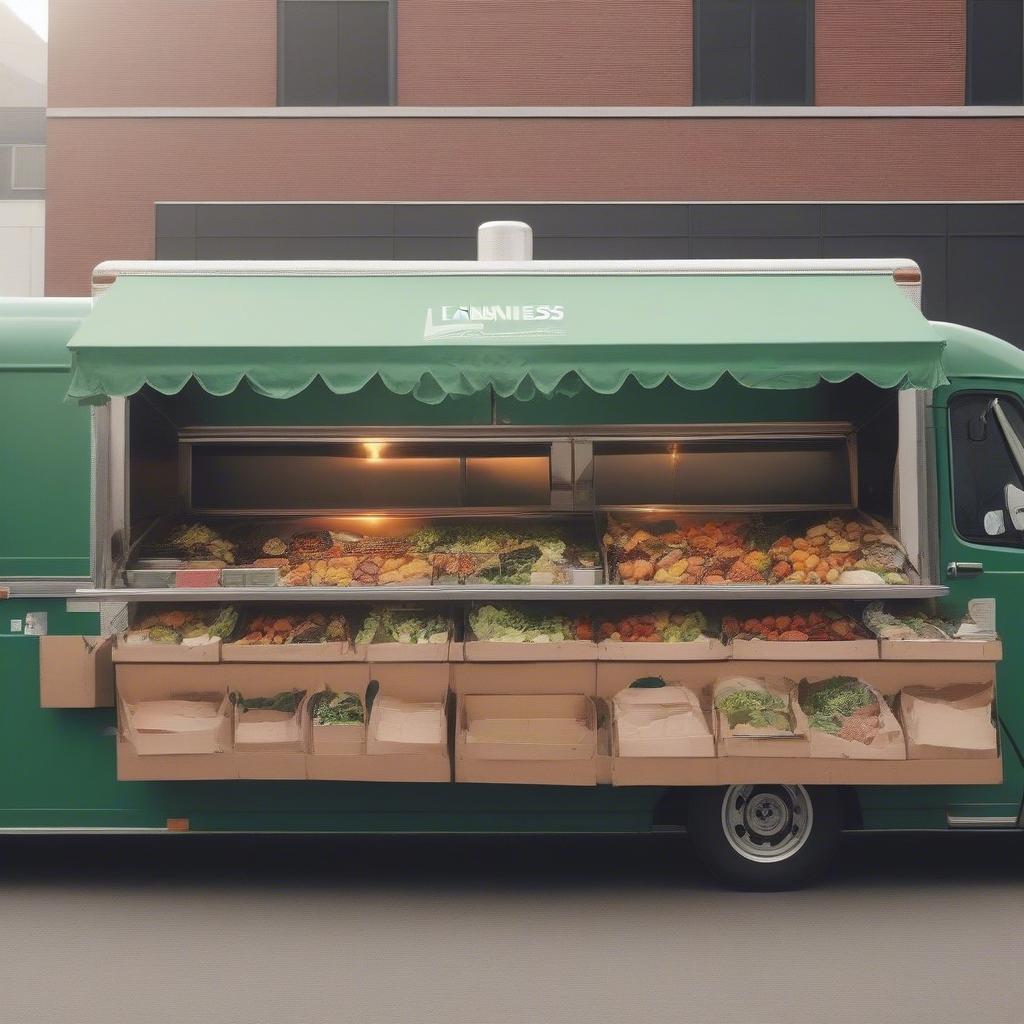
Essential Market Research for a Food Truck Startup
Starting a food truck startup is an exciting venture, a culinary adventure on wheels! But before you fire up the grill and hit the streets, you need solid market research. It’s not just about having a great recipe; it’s about knowing your customers, your competition, and your prime locations. This article is your comprehensive guide to navigating the world of market research for your food truck startup, ensuring you’re set up for success.
Why Market Research is Non-Negotiable for Your Food Truck Startup
Imagine building a house without a blueprint. Sounds risky, right? That’s what launching a food truck startup without market research is like. Here’s why it’s absolutely essential:
- Minimizes Risk: Avoid costly mistakes by understanding what works and what doesn’t before you invest heavily.
- Identifies Your Ideal Customer: Knowing who you’re selling to is crucial. Are they students, office workers, families, or tourists?
- Uncovers Profitable Niches: Discover unmet needs in the market and tailor your offerings to fill those gaps.
- Determines Optimal Pricing: Avoid over or undercharging. Market research helps you find the sweet spot.
- Chooses the Right Locations: Identify areas with high foot traffic and a hungry demographic for your food.
- Crafts a Strong Brand: Learn what resonates with your target audience and build a brand that connects.
- Improves Menu Planning: Offer dishes that people crave, based on real data not guesswork.
- Gains a Competitive Edge: Stay ahead of other food truck businesses by understanding their strategies.
- Secures Funding: Investors want to see you’ve done your homework. Solid market research strengthens your business plan.
- Drives Sustainable Growth: A well-researched strategy is the foundation for long-term success.
Essentially, market research is your compass in the competitive world of food truck startups, guiding you towards a profitable and sustainable business.
Types of Market Research: What to Focus on for Your Food Truck
There are two main types of market research: primary and secondary. Both are vital for a successful food truck startup.
Primary Research: Gathering Your Own Data
Primary research involves collecting original data through direct interaction with your target audience. It’s like doing your own detective work. Here are some key methods:
- Surveys:
- What They Are: Structured questionnaires to gather quantitative data.
- Why They Matter: Ideal for collecting data on customer preferences, pricing sensitivity, and awareness of competing food trucks.
- How to Use Them: Create online surveys (using tools like SurveyMonkey or Google Forms), distribute paper surveys at local events, or share them on social media. Offer small incentives to boost participation.
- Example Question: "On a scale of 1 to 5, how likely are you to try a new food truck serving [your cuisine type]?"
- Interviews:
- What They Are: One-on-one conversations to gain in-depth qualitative insights.
- Why They Matter: Uncover underlying motivations, frustrations, and desires related to food and food trucks.
- How to Use Them: Conduct informal interviews with potential customers at local events or via phone/video calls. Prepare open-ended questions and encourage them to share their thoughts.
- Example Question: "What do you enjoy most about eating at a food truck? What could make it better?"
- Observations:
- What They Are: Watching and recording customer behavior in relevant settings.
- Why They Matter: Identify popular locations, peak hours, and customer interaction patterns.
- How to Use Them: Spend time observing food truck operations at events or popular locations. Note down what works well and what doesn’t.
- Example Observation: "Note the type of food trucks that have the longest lines and what they offer."
- Taste Testing & Feedback:
- What They Are: Giving free samples of your food to get reactions and opinions.
- Why They Matter: Validate your menu and pricing by seeing how your target market responds.
- How to Use Them: Set up a small taste-testing booth at a local market or event. Encourage customers to provide honest feedback.
- Example Feedback Question: "What did you like or dislike about the flavors or presentation of this sample?"
Tips for Effective Primary Research:
- Be Clear on Your Objectives: Define what you want to learn before starting.
- Target the Right Audience: Focus your efforts on potential customers.
- Keep It Simple: Use clear and concise language in surveys and interview questions.
- Be Objective: Don’t let your biases influence the results.
- Analyze Your Findings: Turn raw data into actionable insights.
Secondary Research: Leveraging Existing Information
Secondary research uses data that already exists, such as reports, articles, and public records. It’s like doing desk-based research. Key sources include:
- Industry Reports:
- What They Are: Detailed analysis of the food truck industry.
- Why They Matter: Provide trends, market size, and competitive data.
- Where to Find Them: Search industry associations, market research firms, and business journals.
- Government Data:
- What They Are: Census data, permits and regulations, business registration.
- Why They Matter: Understand demographics, income levels, and legal requirements for your area.
- Where to Find Them: Access local government websites, municipal offices, and the Small Business Administration (SBA).
- Competitive Analysis:
- What They Are: Researching other food trucks in your area.
- Why They Matter: Understand your competitors’ strengths and weaknesses.
- How to Do It: Visit their locations, analyze their menus, check their social media, read customer reviews.
- Online Forums & Social Media:
- What They Are: Online discussions and social media posts.
- Why They Matter: Gain insights into customer sentiment and preferences.
- Where to Find Them: Use tools like Facebook, Reddit, and Twitter to identify trends and discussions about food trucks in your area.
- Academic Studies:
- What They Are: Research published by universities and research institutes.
- Why They Matter: Provides a deeper understanding of consumer behavior.
- Where to Find Them: Use databases like Google Scholar and university library resources.
Tips for Effective Secondary Research:
- Start Broad: Cast a wide net initially and narrow down later.
- Evaluate Sources: Verify the credibility and accuracy of your sources.
- Look for Patterns: Identify trends and insights from the data you find.
- Combine Sources: Use multiple sources to get a comprehensive view.
- Update Regularly: The market is always changing, so keep your research fresh.
Step-by-Step Guide to Market Research for Your Food Truck Startup
Now, let’s break down the market research process into actionable steps for your food truck startup:
Step 1: Define Your Target Audience
- Who are they? Think about demographics (age, gender, income, education) and psychographics (lifestyle, values, interests). Are you targeting college students looking for quick, affordable meals? Or are you targeting a higher income demographic looking for gourmet food on the go?
- What are their needs and desires? What kind of food do they crave? What are their preferences in terms of price, convenience, and experience?
- Where do they hang out? Identify locations where your target audience is likely to be. Are they at college campuses, business districts, community events, or tourist hotspots?
- Example: A food truck startup specializing in vegan burgers might target young, health-conscious individuals who frequent farmers markets and festivals.
Step 2: Analyze Your Competition
- Identify your competitors: Who are the other food trucks operating in your area or in the same cuisine category?
- Visit their locations: Take note of their menu, pricing, operations, and customer service.
- Analyze their strengths and weaknesses: What do they do well? What can you do better?
- Check online reviews: See what customers are saying about your competitors on sites like Google Reviews, Yelp, and Facebook.
- Example: If your target market is vegan, check out the plant-based competition, analyse their menu and their reviews.
Step 3: Research Your Location
- Identify potential locations: Look for areas with high foot traffic, good visibility, and parking options.
- Consider local regulations: Check the permit requirements and zoning laws in your area.
- Analyze traffic patterns: Note the busiest times of day and days of the week.
- Assess the demographics of the area: Is your target audience present in your chosen locations?
- Example: A location near a university campus is great for a quick lunch while a business district would work well for afternoon break crowds.
Step 4: Develop Your Menu & Pricing
- Create a menu based on your target audience: Offer dishes that cater to their preferences and needs.
- Price your menu competitively: Research pricing of competitors and consider your operating costs.
- Consider different price points: Offer budget-friendly options as well as premium choices.
- Test your menu and pricing: Conduct taste tests and surveys to get feedback from potential customers.
- Example: A food truck startup might choose to offer smaller sized meals at a lower price for budget-conscious customers and larger portions at a higher price for those looking for bigger servings.
Step 5: Test Your Concept
- Start small: Don’t invest everything you have upfront. Begin with small test runs at local markets or events.
- Gather feedback from real customers: Use your test runs to gather data and fine-tune your concept.
- Adjust your approach based on feedback: Be prepared to pivot or change direction as needed.
- Example: Attend a local community event to serve your food and get real time feedback to make changes before a full launch.
Step 6: Analyze Your Data
- Compile and organize your data: Collect all information from surveys, interviews, and observations.
- Look for patterns and trends: Identify common themes and insights.
- Draw conclusions and make recommendations: Turn your data into actionable steps.
- Example: If 70% of respondents in your survey prefer spicier food, adjust your recipes to meet that preference.
Practical Tools and Templates for Your Market Research
To make market research more manageable, here are some practical tools and templates you can use:
Template 1: Competitor Analysis Template
| Competitor | Menu/Cuisine | Pricing | Location(s) | Strengths | Weaknesses | Online Reviews |
|---|---|---|---|---|---|---|
| Competitor A | ||||||
| Competitor B | ||||||
| Competitor C |
Template 2: Customer Survey Template
- Question 1: What is your age range? (e.g., 18-24, 25-34, etc.)
- Question 2: What is your gender? (Male, Female, Other)
- Question 3: How often do you eat at a food truck? (Never, Rarely, Sometimes, Often)
- Question 4: What type of food are you most likely to order from a food truck? (List options)
- Question 5: What are the factors that influence your decision when choosing a food truck? (Price, Location, Menu, Speed, etc.)
- Question 6: On a scale of 1 to 5, how important is it to you that a food truck uses fresh, local ingredients?
- Question 7: What is your preferred payment method at a food truck? (Cash, Card, Mobile Payment)
- Question 8: How much are you willing to pay for a typical meal from a food truck? (Price range options)
- Question 9: Would you be willing to try a new food truck offering [your cuisine type]? (Yes, No, Maybe)
Template 3: Location Analysis Checklist
- Foot Traffic: Is the area busy during your target hours?
- Visibility: Is the location easily seen from the street?
- Parking: Is there ample parking for customers?
- Accessibility: Is the location easily accessible by pedestrians, bikes, and public transport?
- Competition: How many other food trucks or restaurants are nearby?
- Permits: Have you checked the regulations for operating in this area?
- Demographics: Does this location attract your target audience?
Useful Tools:
- Google Forms/SurveyMonkey: For creating and distributing online surveys.
- Google Maps: For identifying potential locations and analyzing traffic patterns.
- Yelp/Tripadvisor: For reading customer reviews of competitors.
- Social Media Listening Tools: For identifying trends and discussions.
- Spreadsheet Software (Google Sheets, Excel): For organizing and analyzing your data.
Overcoming Common Challenges in Food Truck Market Research
Challenge 1: Limited Resources
- Solution: Focus on free or low-cost methods like online surveys, social media, and observation. Utilize local libraries for research access and free local event participation to gain feedback.
Challenge 2: Time Constraints
- Solution: Allocate specific time slots for market research and be efficient. Prioritize key areas and set realistic goals for your research.
Challenge 3: Bias
- Solution: Be objective and collect data from a wide range of sources. Get feedback from people you don’t know to avoid bias.
Challenge 4: Getting Honest Feedback
- Solution: Encourage customers to be candid and don’t take any criticism personally. Offer incentives for participation in surveys and interviews.
Learn Business: Your Partner in Food Truck Success
At Learn Business, we understand the challenges of starting a food truck startup. We know that good market research is the key to success. That’s why we offer a range of services designed to support you every step of the way.
How Learn Business Supports Your Food Truck Startup:
- Business Plan Templates: Our comprehensive templates will help you structure your ideas and create a professional business plan, complete with space for your market research findings.
- Customizable Market Research Templates: Save time and effort with our ready-made templates designed specifically for food truck startups.
- Financial Forecasting Tools: Get a clear picture of your potential revenue, costs, and profits to ensure financial sustainability.
- Expert Guidance: Access a team of experienced business consultants who can answer your questions and provide personalized advice.
- Access to Resources: We provide access to a library of articles, guides, and other resources to help you navigate every aspect of your business.
By leveraging Learn Business resources, you will have the tools and support you need to create a successful food truck startup, built on solid market research.
The Road Ahead: Applying Your Market Research Insights
Your market research journey is not a one-time activity, but an ongoing process. You should continue to refine your strategy based on new information and changing market dynamics. Here’s how to use your insights:
- Refine Your Business Plan: Use the insights from your research to fine-tune your business plan and ensure it’s viable and profitable.
- Adjust Your Menu: Keep your menu fresh and relevant by incorporating customer feedback and experimenting with new dishes.
- Optimize Your Operations: Streamline your workflow to improve efficiency and reduce costs.
- Enhance Your Marketing Strategy: Connect with your target audience through targeted marketing campaigns based on your market research.
- Stay Competitive: Continuously monitor your competitors and adapt to changes in the industry.
By consistently applying your market research findings, you can ensure your food truck startup is thriving and meeting the evolving needs of your customers.
Final Thoughts: Your Recipe for Success
Launching a food truck startup is a challenging but incredibly rewarding experience. By prioritizing comprehensive market research, you’ll lay a solid foundation for success. Remember, the key is to understand your target audience, analyze your competition, choose the right location, offer a compelling menu, and continuously adapt based on feedback. With dedication, passion, and a good understanding of the market, your food truck is destined to be a local sensation. And remember, Learn Business is here to help you navigate every step of your entrepreneurial journey, providing you with the guidance, templates, and resources you need to thrive! Take these new business tips and make them your own!



Leave a Reply